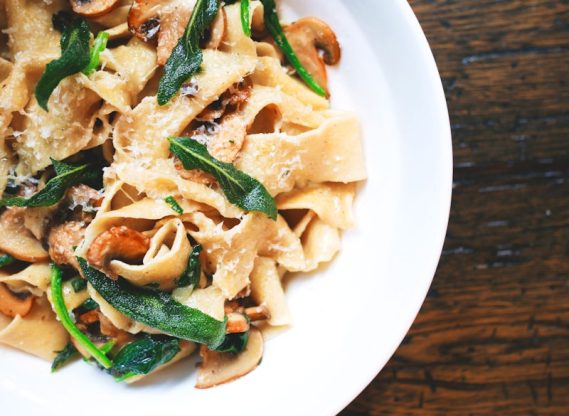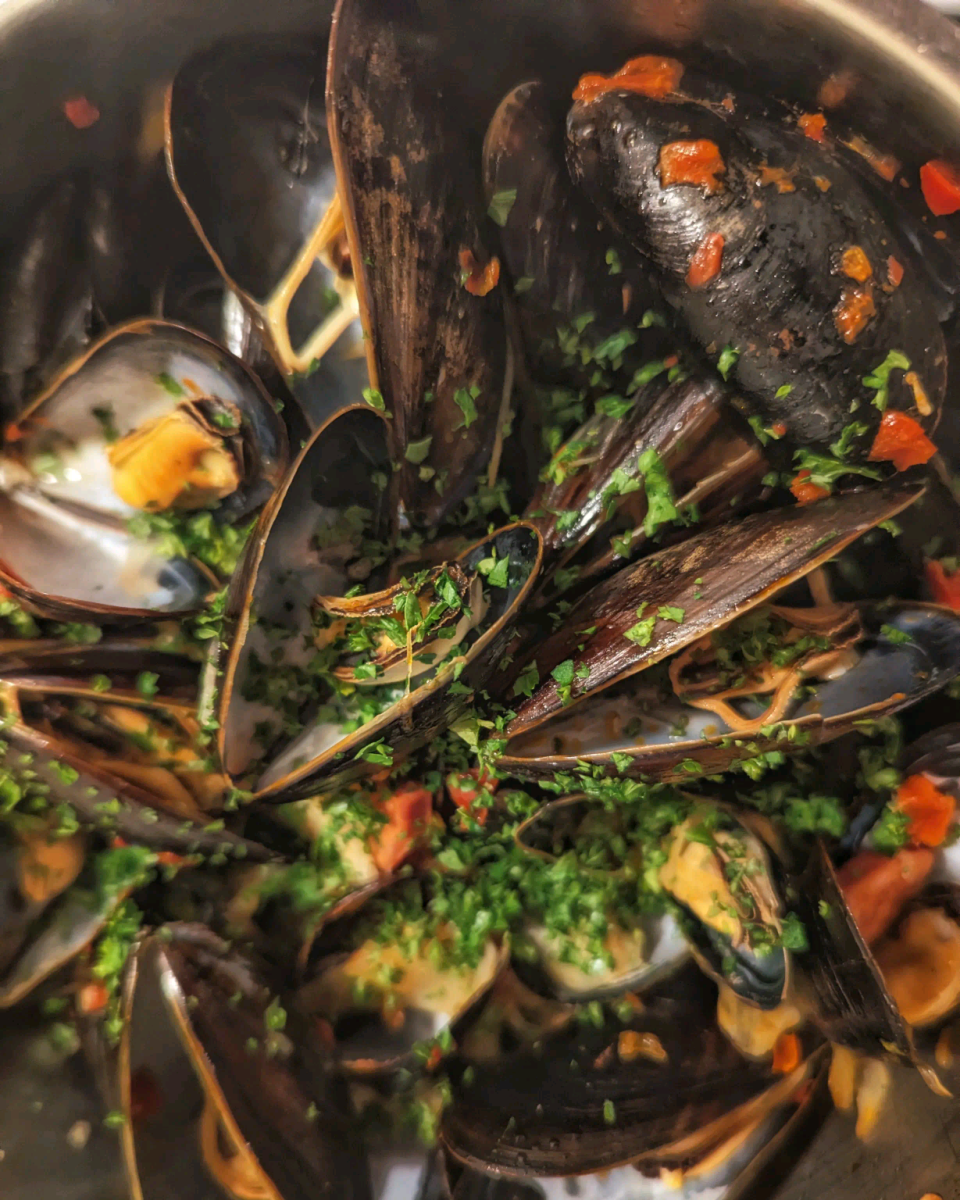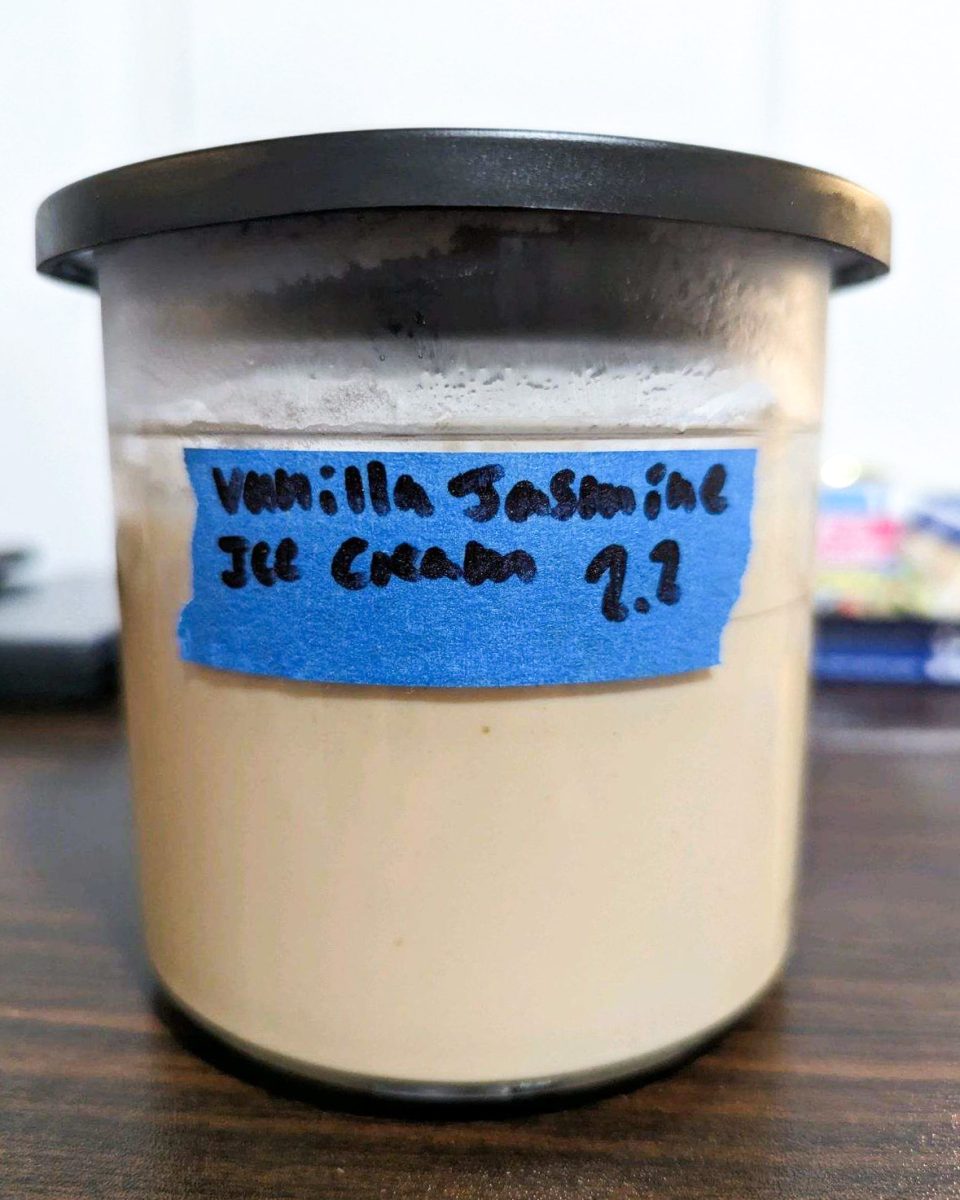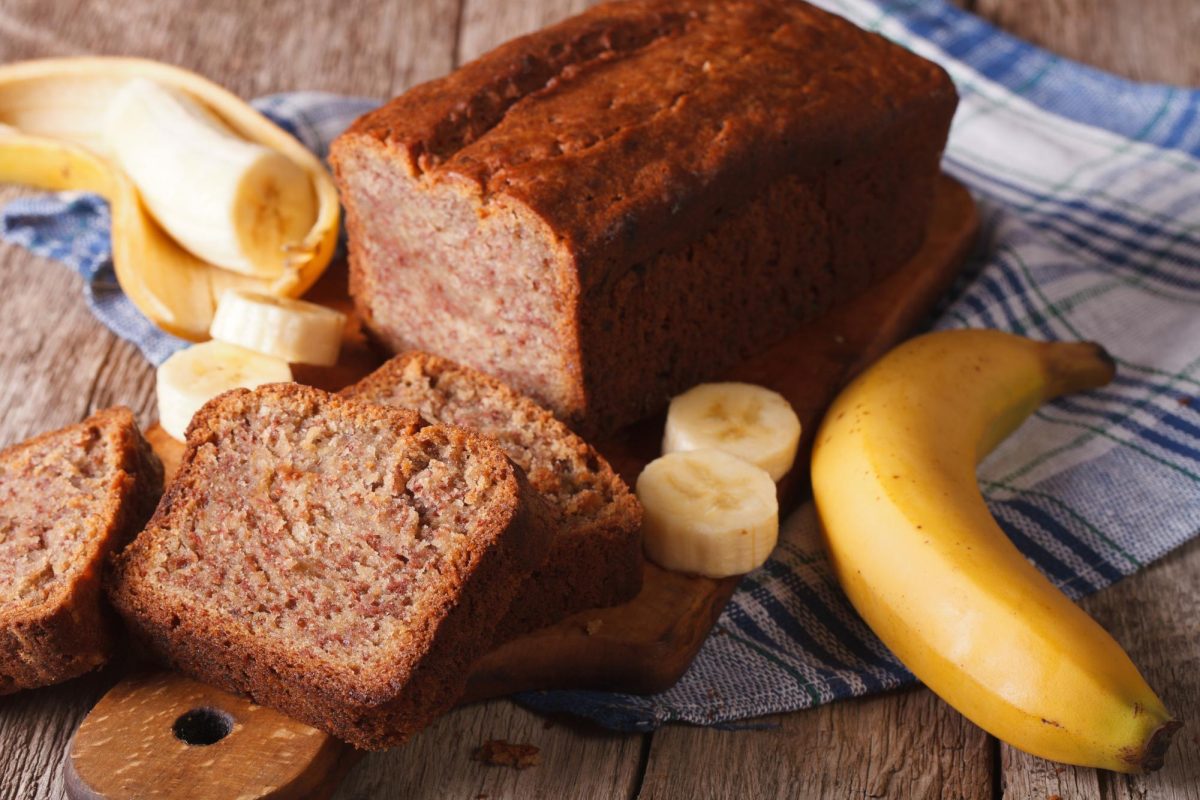
The viral sage brown butter sauce rightfully took the internet by storm several years ago. This wonderfully floral, rich and nutty mixture is both versatile and easy to make. In this recipe, we suggest implementing a restaurant-style approach to elevate this dish into being a gourmet-menu-level experience.
The first step of the cooking process happens before we even step foot in the kitchen. Since butter is the forefront flavor of the sauce, we highly recommend selecting a brand of butter with excellent flavor quality. While brands such as Kerrygold Pure Irish Butter (our personal favorite), Vital Farms and Vermont Creamery are more expensive, they justify their costs in flavor. These brands generally have a higher percentage of butterfat and contain less water than your run-of-the-mill grocery store brands. Quality-tasting butter usually has a yellowish hue as opposed to a whiter one, due to the higher water content. Butters with higher butterfat content will spread much easier than the latter at room temperature. If you cannot afford to splurge on some upscale butter, fear not — regardless of which brand you choose, how you prepare it is equally as important.
Browning butter seems straightforward enough: heat until fully brown, right? Surprisingly, a substantial amount of technique is involved when extracting as much flavor as possible without burning the butter. The line between perfectly browned and burnt butter is extremely thin, and we’re going to push our luck as far as we can without going overboard.
A perfect sauce requires the use of each one of your senses. The most important factor at this step is the amount of heat that is applied. If the heat is too low, the Maillard reaction — the process responsible for browning — can’t occur. Too much heat can leave your sauce tasting like liquid ash. While every stove varies in temperature quality, a good starting point is medium heat. Some may need to play around with higher or lower heat settings to find what works best for them.
As the butter hits the pan, the water content will heat, evaporate and bubble. The bubbles are an incredibly useful indicator of the right temperature. Your pan should be filled with small and medium-sized bubbles, and the sizzling should sound relaxed and gentle. If the bubbles are too big and the pan sounds too raucous, temporarily take it off the stove and lower the heat.
After you find the proper heat to cook the sauce, you will need to calculate when it’s expected to be done cooking. As we’ve stated, each stove is different but a good starting point is to aim for about five to eight minutes of cooking time. As you cook, your pan will eventually stop bubbling as all the water will have evaporated. At this point, it is useful to lower the heat because this process will happen rather quickly.
The butter will then separate into two layers: pure, melted butterfat on top and milk solids on the bottom. As you swirl the mixture in the pan, the butterfat will continue to brown as the milk solids toast. When your sauce is finished, it will be very aromatic; this is a good sign that the Maillard reaction has done its job by unlocking new flavor compounds in the butter. It should smell sweet, nutty and somewhat like toffee; it will also exude the pleasant aroma of sage. The milk solids should be brown and toasted, while the melted butter should now display a subtle, golden-brown shine.
The final step is to taste your concoction. It should not have any astringent or bitter flavors, but rather a wonderfully rich, deep and nutty flavor, with a slight hint of caramel that coats the palate nicely. This will act as a base for the perfect sauce.
A decadent sauce on top of low-grade pasta acts like expensive paint on a broken canvas. Truly exceptional pasta starts with traditionally-salted pasta water. Seasoning your water deeply penetrates the surface and evenly distributes the salt so that every bite afterward is consistently delicious. As a rule of thumb, you want your water to taste as salty as the ocean. According to America’s Test Kitchen, that flavor is typically accomplished with 1 tablespoon of kosher or sea salt to 4 quarts of water for every 1 pound of pasta.
Perfectly cooked pasta is all about the timing. Each variety and shape cooks at a different rate. It takes around 12 minutes for perfectly cooked pasta to be considered al dente. At this point, it’ll be soft while still having a bit of chew. When bitten in half, the pasta should not reveal a white line in the center; a great way of gauging when it is done is without a timer. While it may be tempting to cook the pasta for 12 minutes and then add it to the butter to build the flavor of the sauce, doing so will result in overcooked pasta, since building the sauce takes some time. To avoid this, simply decrease the amount of time you leave it in the water by two minutes. After cooking for 10 minutes in the water and building the sauce for two minutes, it should come out perfect every time.
Now that we have a beautiful sage-infused brown butter and perfectly cooked pasta, all we have left to do is build the sauce. If we merely toss the two components together, the butter will pool at the bottom of the bowl. Instead, we want the butter to cling to the pasta for a velvety mouthfeel. Thankfully, we have a secret weapon: pasta water. As the pasta cooks, it releases starches and gluten into the pot; restaurants often take full advantage of these perfect binders. Adding two ounces of the pasta water to the butter and pasta while stirring and tossing vigorously will create a wonderfully smooth emulsion. This technique takes practice to perfect. Optionally, a splash of cream or grated parmesan can help bind the sauce, as the imparted nature of the flavors help to complement the butter.
Flavors that are synonymous with your main flavor profile will help to separate good dishes from great ones. The cohesive flavor often serves as the key difference between a one-dimensional dish and one that’s vibrant and jumps off the plate. Our homemade sauce is inherently very heavy and rich, so we need ingredients that will help brighten and add complexity to the sauce while also maintaining its balance. Sautéed shallots would help add a mild garlic and onion flavor to the background. Also, the sharp bite of black pepper seasoning helps to add contrast that would cut through the overall richness of the dish. Blooming ground black pepper being added to hot butter would likely unlock dormant floral and sweeter flavors. The added amount of both ingredients is up to personal preference. I love the taste of black pepper, which I often add while cooking and on top of the dish afterwards as a garnish. But, this dish is yours, and there are no rules in your kitchen. If you love the taste of cheese, add grated parmesan. If you love spice, add crushed red pepper. This recipe is a blank canvas for you to make your own version, so experiment — and most importantly, enjoy.
Sage Brown Butter Pasta
- Total time: 30 minutes
- Yield: 2 servings
Kitchenware:
- 10-inch stainless steel pan
- 4-quart stock pot
- Ladle
Ingredients:
- 1 teaspoon shallots, very finely minced
- 5-6 tablespoons unsalted butter, cubed
- 4 large sage leaves, whole
- 4 ounces dried rigatoni
- Salt and black pepper to taste
Recommended Garnishes:
- Freshly cracked black pepper
- Grated parmesan
- Chopped parsley
- Toasted breadcrumbs
Instructions:
- Bring 2.5-3 quarts of salted water to a boil.
- Drop pasta into boiling water.
- Melt butter on medium heat with sage, continuing to heat for about five to eight minutes, frequently stirring until golden brown and aromatic. Remove fried sage and set aside on a paper towel.
- Add shallots and black pepper for about 15 seconds, then take them out. They will burn if left in for too long.
- Add cooked pasta and 1-2 ounces of cooking water to the brown butter.
- Stir pasta vigorously to emulsify the pasta water and butter until thickened.
- Plate, garnish with fried sage and serve.


















